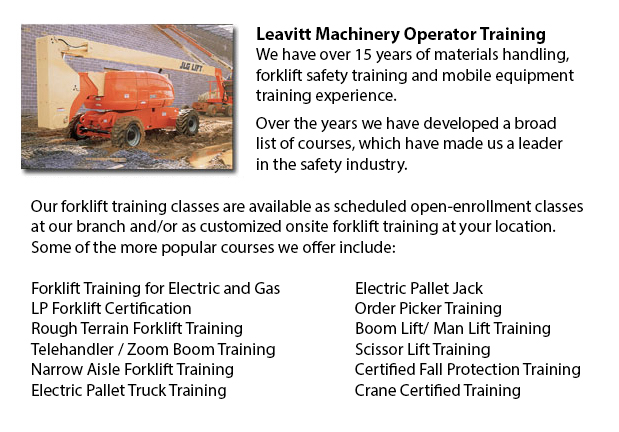
Hamilton Aerial Lift Safety Training - Each and every year, there are roughly 26 construction deaths attributed to the use of aerial lifts. Nearly all of the craftsmen killed are electrical workers, laborers, ironworkers, carpenters or painters. The majority of the deaths are caused by falls, tip-overs and electrocutions. The greatest risk is from boom-supported lifts, such as cherry pickers and bucket trucks. The majority of the fatalities are connected to this kind of lift, with the rest involving scissor lifts. Other hazards include being struck by falling objects, being thrown out of a bucket, and being caught between the lift bucket or guardrail and a thing, such as a steel beam or joist.
The safe operation of an aerial lift needs a check on the following things prior to using the device: emergency and operating controls, personal fall protection gear, safety devices, and tires and wheels. Check for possible leaks in the air, fuel-system, hydraulic fluid. Check the device for missing or loose components.
The places that worker would use the aerial device must be examined thoroughly for potential dangers, like bumps, holes, debris and drop-offs. Overhead powerlines have to be avoided and monitored. It is suggested that aerial lift devices be used on surfaces that are level and stable. Do not work on steep slopes that go beyond slope restrictions which the manufacturer specified. Even on a level slope, wheel chocks, outriggers and brakes must be set.
Companies should provide their aerial lift operators with the correct instruction manuals. Mechanics and operators should be trained by a certified individual experienced with the relevant type of aerial lift.
Aerial Lift Safety Tips:
o Prior to operating, close doors and lift platform chains.
o Leaning over and climbing on guardrails is prohibited. Stand on the floor of the bucket or platform.
o Stay within manufacturer's load-capacity limits.
o When working near traffic, make use of appropriate work-zone warnings, like cones and signs.
If correct procedures are followed, electrocutions are avoidable. Stay at least 10 feet away from whichever power lines and licensed electricians must de-energize and/or insulate power lines. Those working have to utilize personal protective equipment and tools, such as a bucket which is insulated. Nevertheless, an insulated bucket does not protect from electrocution if, for example, the person working touches another wire providing a path to the ground.
When in the bucket, workers have to prevent possible falls by securing themselves to the guardrails by utilizing a positioning device or a full-body harness. If there is an anchorage in the bucket, a positioning belt together with a short lanyard is adequate.
Tip-overs are preventable by following the manufacturer's instructions. Unless the manufacturer specifies otherwise, never drive while the lift platform is elevated. Adhere to the device's vertical and horizontal reach limitations, and never go beyond the specified load-capacity.
-
Hamilton Aerial Platform Training
Hamilton Aerial Platform Training - Aerial hoists are able to accommodate various odd jobs involving high and hard reaching spaces. Often utilized to perform routine repair in structures with high ceilings, prune tree branches, hoist heavy shelving u... More -
Hamilton Heavy Equipment Operator Certification
Hamilton Heavy Equipment Operator Certification - The heavy equipment operator is a person who manipulates the controls and drives different kinds of big machinery. Heavy machinery is most commonly utilized on construction sites to deliver supplies t... More -
Hamilton Scissor Lift Ticket
Hamilton Scissor Lift Ticket - Scissor lifts have greatly benefited construction operations in view of the fact that the job that used to require much effort and lots of people, can now be completed utilizing the scissor lift truck and only one indiv... More -
Hamilton Forklift Certification Courses
Hamilton Forklift Certification Courses - Forklift certification courses really help to make sure that businesses utilizing forklifts, comply with the regional and local rules. The drivers of the forklift should undergo forklift certification prior t... More -
Hamilton Forklift Training Program
Hamilton Forklift Training Program - The forklift is a common powered industrial vehicle which is in wide use these days. They are occasionally called jitneys, hi los or lift trucks. A departments store would use the forklift to unload and load merch... More -
Hamilton Forklift License
Hamilton Forklift License - Obtaining a forklift license or forklift certification in North America would require the trainee to do hands-on training in addition to classroom instruction. The state, provincial and federal regulatory bodies are respon... More -
Hamilton Manlift Operator Certification
Hamilton Manlift Operator Certification - Our aerial lift and scissor platform training and certification empowers participants with a general understanding and knowledge of the efficient and safe use of "Power Operated Mobile Work Platforms," under... More -
Hamilton Forklift Operator Certification
Hamilton Forklift Operator Certification - Forklift operator certification is usually needed for employees working in industrial, warehouse or construction setting to guarantee the safe utilization of forklifts. Workplace training has to follow a met... More

Forklift Certification Hamilton
TOLL FREE: 1-888-254-6157
Hamilton, Ontario
forkliftcertificationhamilton.com
Email Us
About Us


